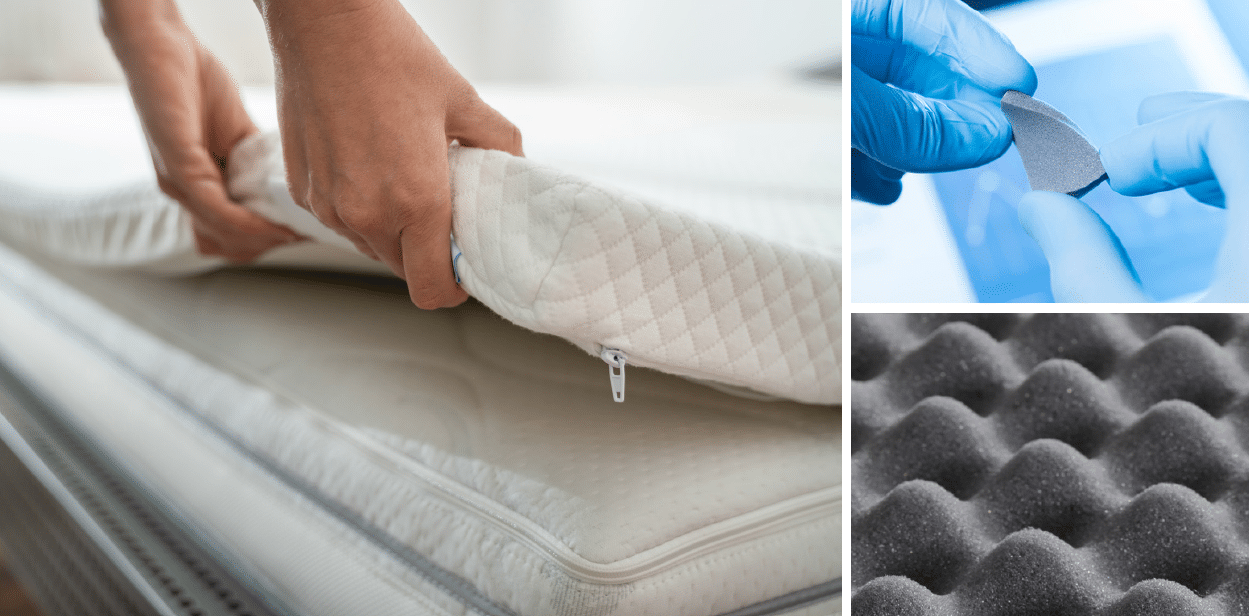Case study
For over 70 years, Dunlop Foams have been leading the way in foam manufacture and design in Australasia, establishing a strong reputation for leading edge innovation and expertise. Now with eight world-class manufacturing operation sites across Australia and New Zealand, Dunlop Foams are dedicated to ensuring only the highest quality foam products are produced for their customers.
In the production of everyday consumer products such as foams for furniture, furnishings and bedding, there are several safety, compliance and quality measures that must be followed.
This case study demonstrates how NZWTA Materials & Textiles Testing has partnered with Dunlop Foams, offering both expert advice and technical capabilities, to ensure their products deliver on safety as well as meeting their standard of excellence.
Client Background

Dunlop Foams develops and produces a diverse range of products for various needs and industries, including bedding, furniture, healthcare equipment, sports, packaging, transport, and cleaning.
Leading edge innovation, expertise and world-class operations are at the heart of Dunlop Foams. They have a dedicated research and development team, constantly working to improve and innovate their product offering and capabilities.
The challenge
When consumers or facilities are procuring furniture, there are several factors to take into consideration. These include ergonomics, comfort, functionality, aesthetics, and flammability. For the healthcare sector, products must also meet essential fire regulation standards as well as specialist health and comfort needs. Failure to comply with standards can result in inferior products, ineffectiveness, and potentially harm to life – with legal repercussions possible.
Dunlop Foams produce a diverse range of products and regularly supply to the healthcare market, commercial seating and the recreational sector in New Zealand and Australia. As such, Dunlop Foams need to ensure consistency of quality in the final product, as well as compliance with regulations and standards.
As a specific example, Dunlop Foams need to stringently test products to meet the required standards against ignition and fire-retardancy, including the official BS5852. This test assesses the flammability of different products, utilising a range different ignition sources.
Implementation
NZWTA Senior Textile Technologist Christian Judan explains that foams in healthcare need to show fire retardancy under the Crib 5 Test. This test is an assessment of the ignitability of foam material by smoldering and flaming ignition sources. A Crib 5 stack is made of wood with an alcohol-soaked fabric “wick” – and looks similar to a Jenga tower. The stack must comprise of 5 tiers, before the fabric wick is set alight and the ignition source burns. We use this method to measure the flammability of the material.
The lab team at NZWTA Textiles and Materials Testing are able to test a wide variety of materials to evaluate BS5852, and also BS7177 – using Crib 7 ignition source for mattresses, mattress pads and bed bases. “In fact,” says Christian, “we can test flame spread, flame propagation of fabrics or plastics and the flammability of a wide range of materials”.
__________________________________________________________________________________
Impact
Liza Bacit, Dunlop Foams R&D Foam Plant Technician states, “It’s all about trust! NZWTA are reliable, fast and have technical service that is second to none”. Liza explains that NZWTA Textiles and Materials Testing provide the service and technical expertise they need to keep ISO accreditation for their products.
“NZWTA delivers an important role to our New Product Development, compliance and Quality assurance programs. Having testing in New Zealand means we get fast results and amazing technical service. NZWTA really are an essential part of our business.”

